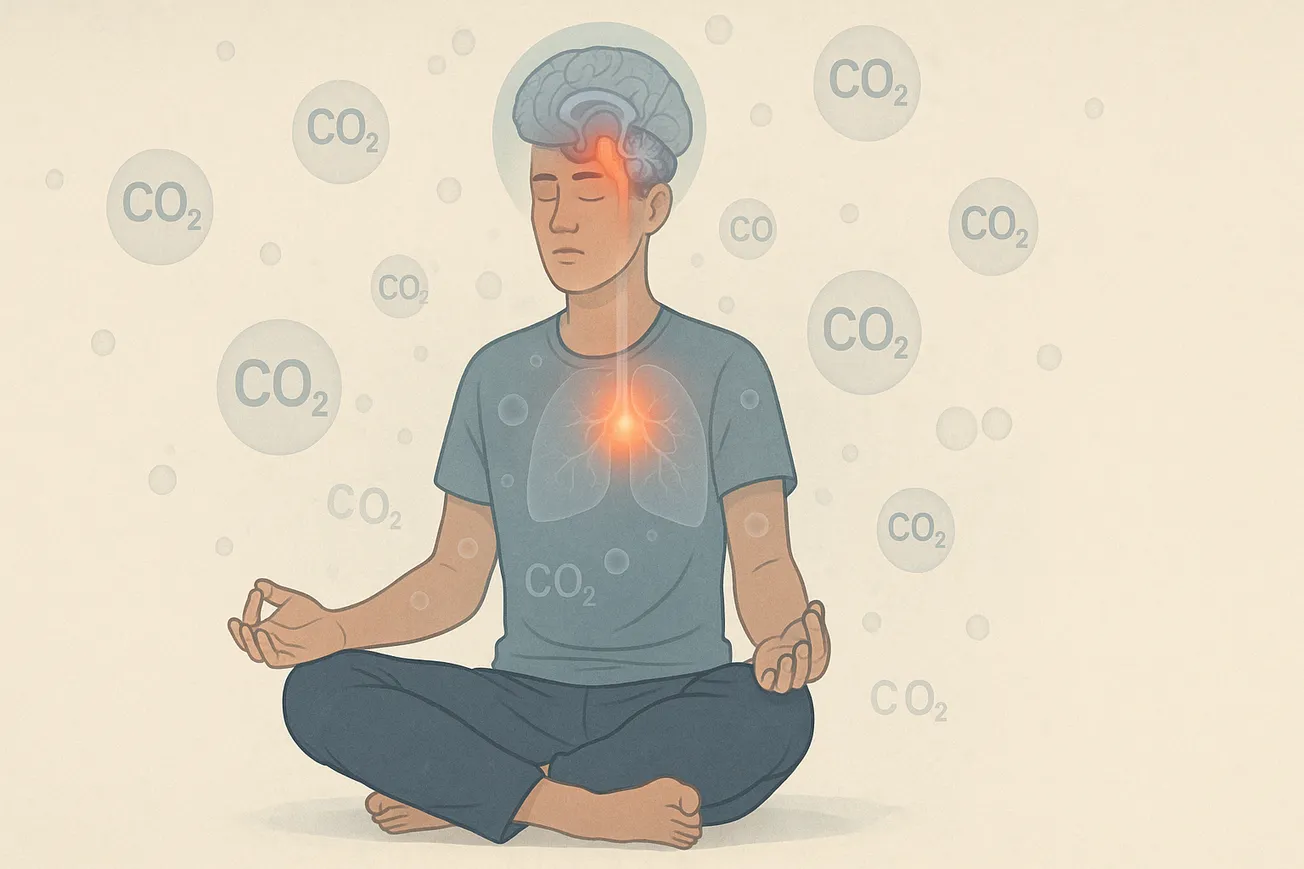Have you ever tried holding your breath and felt that rising wave of panic, that horrible suffocating feeling that seems to hijack your mind? I wanted to dig into exactly what that impulse is, why it feels so extreme, and why some people actually train to challenge it. Here’s what I found.
What is that impulse?
When you hold your breath, especially after exhaling, carbon dioxide (CO2) starts to build up in your bloodstream because you are no longer breathing it out. Your blood oxygen also drops, but it is actually CO2 buildup that primarily drives the urge to breathe.
Special chemoreceptors in your body, located in the brainstem (central chemoreceptors) and in your carotid bodies (peripheral chemoreceptors), constantly monitor CO2 and oxygen levels. When CO2 rises, it slightly acidifies your blood, triggering a powerful “panic” signal to breathe. That suffocating, desperate feeling is essentially a chemical alarm system designed to protect you from low oxygen (hypoxia) and high CO2 (hypercapnia).
Why is it the “worst” feeling?
From an evolutionary standpoint, suffocation was about the most urgent threat you could face. Your nervous system is hard-wired to prioritize breathing above almost anything. The air hunger alarm is so intense because it is built to keep you alive.
Why do people challenge it?
In freediving, sports, and certain meditation practices, people train to tolerate that alarm system, extending their breath-hold capacity.
This builds mental resilience, as you learn to observe and remain calm in the face of intense discomfort.
Physiologically, repeated exposure (such as CO2 tolerance training) can recalibrate your chemoreceptors to tolerate higher CO2 levels, which improves breath control, stress resilience, and even endurance.
Are there benefits?
Yes, potentially:
✅ Better carbon dioxide tolerance, which can help with athletic performance and oxygen delivery (since CO2 helps release oxygen from hemoglobin via the Bohr effect)
✅ Improved breathing efficiency
✅ Calmer nervous system responses under stress (because you practice riding out panic sensations)
✅ Greater interoception (body awareness)
✅ In some traditions, such as yogic pranayama, controlled breath-holds are also said to foster meditative and mental clarity
In short: That horrible feeling is your CO2 alarm screaming at you. Training with it, carefully and systematically, can expand both your physiological capacity and your mental composure.
Why Staying Calm During Discomfort Matters
Learning to observe and remain calm in the face of intense discomfort is one of the most valuable skills you can build. When you train yourself not to panic, even when your body is sending powerful distress signals, you develop a kind of inner steadiness that benefits every area of life.
If you can stay calm while your body screams for air, you can stay calm in traffic, during a stressful meeting, or when facing a personal crisis. Observing discomfort without instantly reacting gives you more freedom and choice, because so much human suffering comes from being pulled around by fear and urgency.
This ability to stay present and steady expands your nervous system’s tolerance, so fewer situations will overwhelm you. That is why practices like meditation, breathwork, and athletic training place such high value on this skill. In many ways, it is one of the clearest and most powerful forms of resilience you can develop.
Other Ways to Train Calm in Discomfort
The ability to observe and remain calm in the face of discomfort can be trained in many ways beyond breath-holds. Cold exposure, such as taking cold showers or ice baths, teaches you to relax through a strong shock response. Physical endurance sports like running, cycling, or weight training help you stay present through fatigue. Mindfulness meditation builds calm awareness by observing sensations and thoughts without reacting. Heat exposure in saunas, practicing fasting, and even martial arts or combat sports all cultivate a steadiness under challenging conditions.
Other everyday practices, such as public speaking or engaging in difficult conversations, are also powerful ways to train this skill. By repeatedly putting yourself in situations where discomfort arises, and practicing calm observation rather than reactivity, you develop one of the most valuable forms of resilience and confidence available.
If you have ever explored breath-hold practices, freediving, or just pushed your own comfort zone with breathwork, I would love to hear your experience. What did it feel like for you? Drop a comment or reach out, and let’s compare notes on riding out that CO2 alarm together.

